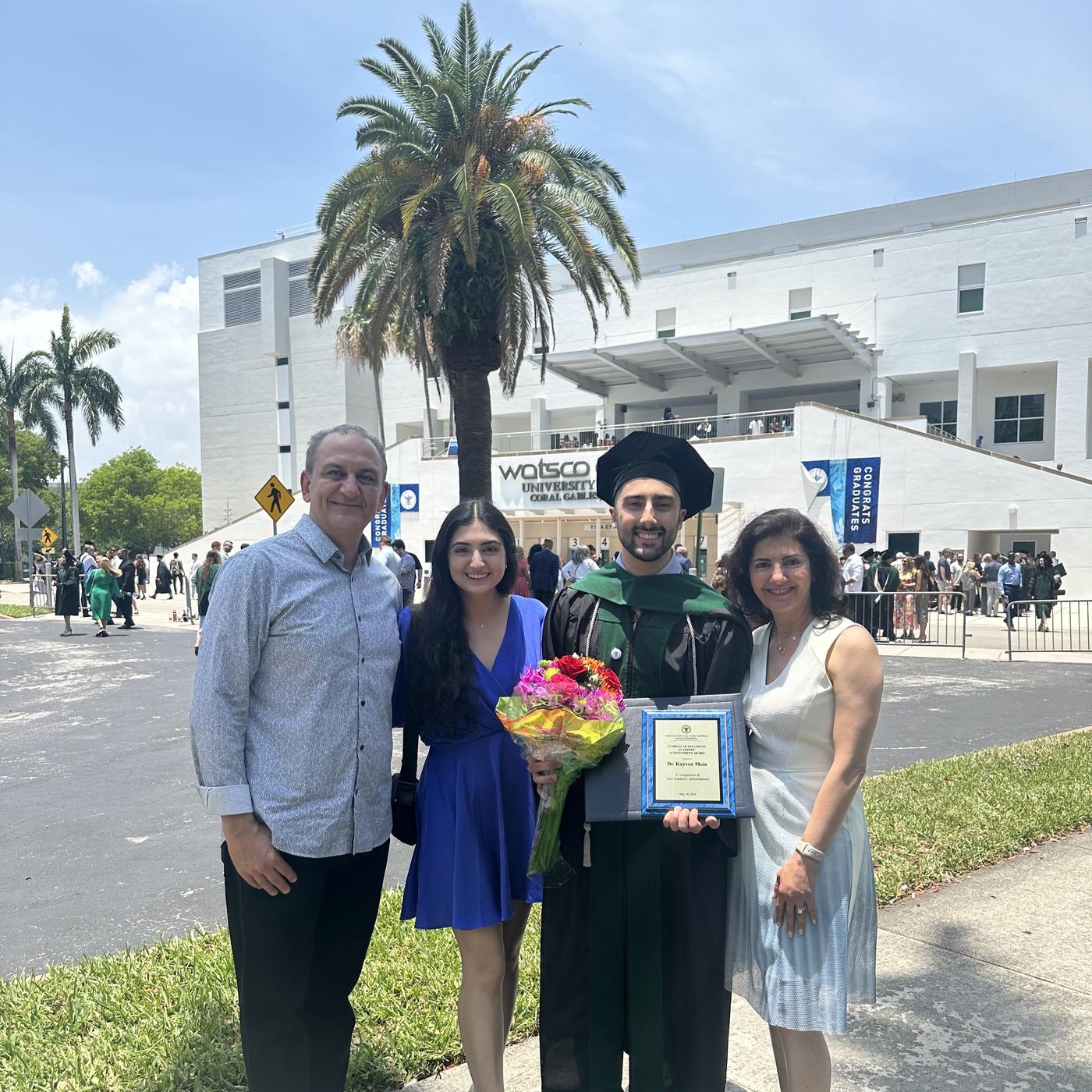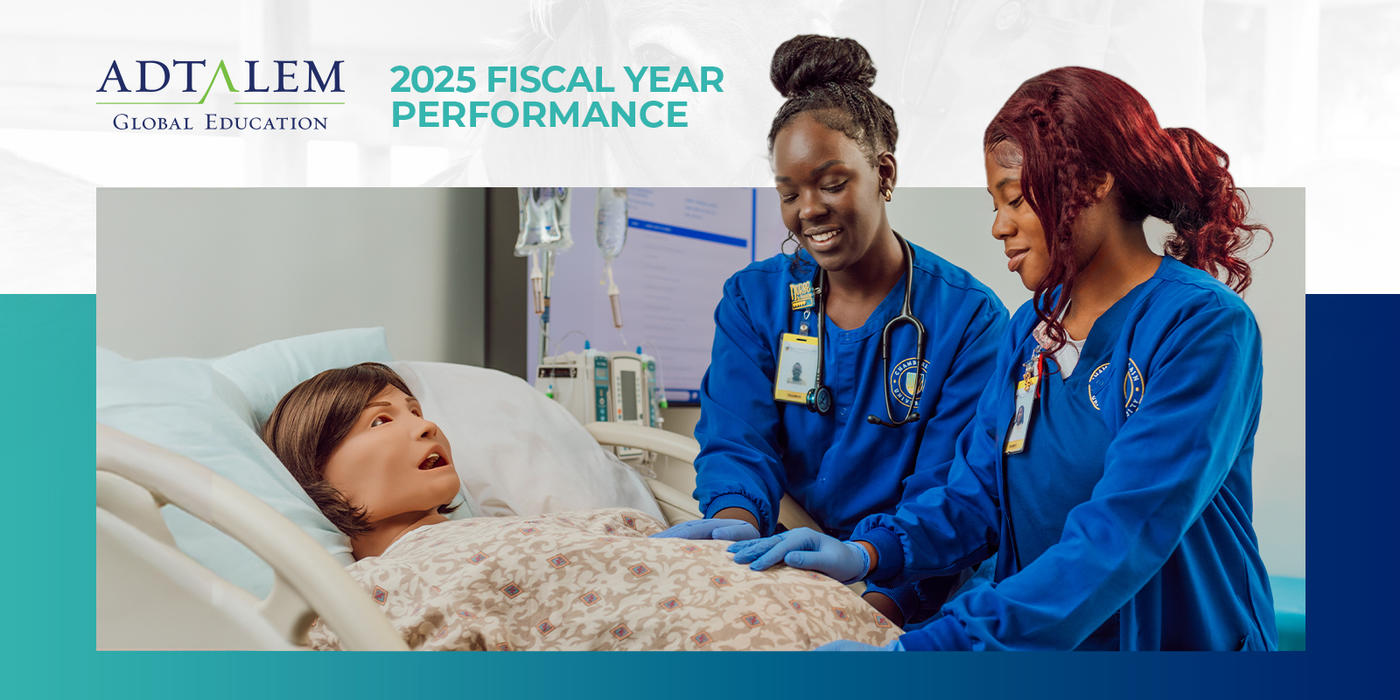From screen strain to sun safety, Kayvon Moin, MD ’24, shares practical ways to protect your eyes and prevent long-term damage.
For Kayvon Moin, MD ’24, interest in vision care began long before medical school at Adtalem Global Education’s American University of the Caribbean School of Medicine (AUC). As a teenager, he tagged along with his mother—then a student in optometry school—to her classes and often happily volunteered to be her practice patient.
“She would dilate my eyes and use me as her test subject. That was my first exposure to the field.”
As he got older, he started working as a technician and scribe at a busy ophthalmology clinic in Orange County, California, where he observed his first cataract surgery and felt the pull closer to the operating table. What hooked him wasn’t just the ability to help patients, it was the innovation in both treatments and the surgical tools available to give people the vision they need.
The path to becoming an ophthalmologist wasn’t easy, though.
Dr. Moin didn’t match into ophthalmology on his first attempt in 2024. Rather than switch specialties, he doubled down. “I’m a firm believer in never giving up and pursuing your dreams no matter what happens or what people say,” he says. “I knew I’d regret it if I didn’t try again.”
He committed to a research year at Hoopes Vision in Utah, where he assisted in clinical trials and patient care under a mentor who would later help him secure interviews. This spring, he matched into a four-year ophthalmology residency at Nassau University Medical Center in Long Island.
He’s already been involved in cutting-edge research, including FDA clinical trials for LASIK, SMILE, and implantable contact lenses. One of the latest innovations he worked with is a light-adjustable lens that can fine-tune vision after surgery using targeted light therapy.
Ophthalmologist or Optometrist? Here’s What to Know
When it comes to eye care, many patients aren’t sure whether they need to see an optometrist or an ophthalmologist. While both professions focus on eye health, there are key differences in their training, scope of care and the conditions they treat.
Optometrists are healthcare professionals who earn a Doctor of Optometry (OD) degree. They perform routine eye exams, prescribe glasses and contact lenses, diagnose common eye conditions like dry eye and glaucoma and can prescribe medications for various eye diseases.
Ophthalmologists, like Dr. Moin, are medical doctors (MDs or DOs) who complete four years of medical school, a one-year internship and an ophthalmology residency. They are trained to diagnose and treat all eye diseases, and they perform surgeries—cataract removal, LASIK and more advanced procedures for conditions like retinal detachment or glaucoma.
Five Tips for Healthier Eyes
Dr. Moin’s background in both research and clinical care gives him a unique lens on what the public should know about eye health. Below, he shares his top tips for healthy vision:
- Protect Your Eyes from the Sun: “Ultraviolet exposure doesn’t just damage skin, it can accelerate cataract formation and harm the retina,” Dr. Moin says. Look for sunglasses labeled with 100% UVA and UVB protection and wear them consistently, even on cloudy days.
- Stop Rubbing Your Eyes: It may seem harmless, but frequent rubbing can lead to keratoconus, a progressive eye disease that causes the cornea to thin and bulge into a cone shape. It’s especially risky for those with allergies or a genetic predisposition. “It’s something I see often in our cornea-focused clinic.
- Prioritize Lid Hygiene: Many people experience discomfort from blepharitis—a condition related to clogged oil glands or eyelid inflammation. “I use lid scrubs daily. They’re available over the counter and help keep the eyelids clean and reduce irritation.” Warm compresses can also help loosen oils and soothe the area.
- Keep Eyes Moisturized: Living in a dry climate or spending hours on screens? Artificial tears can reduce the gritty, tired sensation that comes from dry air or too little blinking. “Hydration is key,” he says. “Use preservative-free drops regularly, especially if your eyes feel strained or dry.”
- Follow the 20/20/20 Rule: In the digital age with increased time looking at screens, eye strain is prevalent. “Every 20 minutes, look at something 20 feet away for 20 seconds,” Dr. Moin advises. “It helps relax the muscles that control near vision and encourages blinking to reduce dryness.”
See more about how our Degrees of Impact are making a difference.
For more information, email the Adtalem Global Communications Team: adtalemmedia@adtalem.com.





